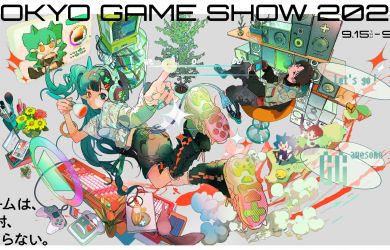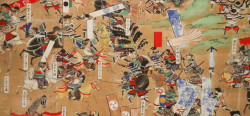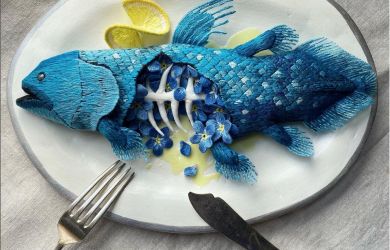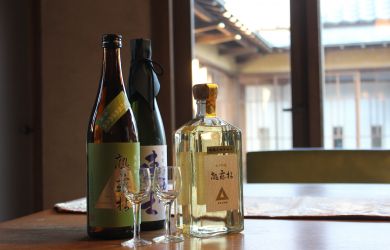
February 4, 2010
Do Justice
Traditional Japanese fabrics used to create something entirely modern
By Metropolis
Originally published on metropolis.co.jp on February 2010
Take a walk through Harajuku, Omotesando or Shibuya these days, and you’ll find no end of big-name budget clothing stores. Such is the current obsession with “fast fashion”—that corner-cutting world of cheap, trendy, disposable duds.
While a boon to consumers who don’t mind burning through a new wardrobe every season, the fast fashion craze is making life even tougher for manufacturers of traditional Japanese fabrics. In the face of mounting competition from companies pushing poorly made, cheaper garments, these businesses are being forced to pay their highly skilled staff rock-bottom wages, and workshops that had survived for generations are closing their shutters for good.
The folks at Do Justice aren’t looking to make a cheap buck: they recognize the importance of hard work, time and skill in producing quality goods, and understand that value cannot be measured by price tag alone. Their clothes incorporate high-quality traditional Japanese fabrics, purchased according to fair trade practices, to create something entirely modern.

Making a kimono isn’t easy. The fabric is woven from raw silk, hemp and other materials into one of many detailed chirimen textures, after which the cloth is dyed using all-natural colorings and traditional techniques. There are two basic styles: saki-zome, where the thread is dyed before being woven, and the elegant ato-zome, which is dyed and decorated after weaving.

There are three different types of obi. The extravagantly designed maru-obi adds a dash of color to monotone Japanese wedding garb—a style that was popular in the 19th century, but is now only used for the most formal of occasions. The fukuro-obi is similar, but features the beautiful, bright patterns on one side. The designs on the modern Nagoya-obi are simpler and more casual in comparison, making it perfect for everyday wear.

More than just a simple bedsheet, the fabric used to create futons is nearly as intricate as a kimono. Shiki-buton and kake-buton are covered in cloth woven from silk or cotton, and dyed into colorful floral designs and patterns. During the Showa period, a bride’s futon was so valuable that she carried the bedding with her when she moved in with her new husband—a practice that fell out of favor as Western-style beds caught on.
Unique. Handmade. Nothing says “I love you” more eloquently than a gift created especially for your one and only. Each Do Justice product has its own serial number, and just as no two people are ever the same, no two pieces of the company’s clothing are alike. Celebrate Valentine’s Day in Japan by having a pair of Kimono Jeans custom-made for the love of your life. Better yet, why not order matching jeans made with the same traditional pattern? Do Justice’s products are crafted with care using high-quality materials, for memories that will last a lifetime.

Each product is crafted individually, and no single piece of fabric is ever used twice on the same type of clothing item.

After an obi or kimono is chosen for use in a Do Justice product, the seams are unpicked by hand.

Each piece is cut, sewn and ironed carefully to ensure that the garment looks smooth and the seams are tight.

The finished product is wrapped in a traditional tatoushi package made from Japanese paper, with the owner’s name written on the front.
When Japanese people hear about the overseas success of Ichiro Suzuki or Toyota, they feel proud of their country. “Made in Japan” has long been a byword for our people’s commitment to excellence and perfection, but it’s a phenomenon that is slowly dying out. The art of cloth making—a skill that can be seen in one of Japan’s most famous cultural products, the kimono—is facing a rapid demise, along with the businesses that depend on it.
Do Justice was born as a way to support skilled artisans while displaying some of the most intricate beauty that Japan has to offer. We style our clothes to showcase the proud traditions of Japanese craftsmen, combining their fabrics with classic Western fashion in a way that can be worn by both men and women of any nationality. By incorporating time-honored Japanese materials and techniques into its design and production, Do Justice’s clothing makes a unique addition to anyone’s wardrobe.
Chizuko Yahagi, Do Justice designer

Necktie: Do Justice creates neckties with both kimono and obi fabric. The patterns used are carefully selected for balance, and each tie is a one-of-a-kind piece.

Kimono Western Shirt: This is about as “West Meets East” as it gets, pairing classic cowboy digs with slick kimono patterns. Available in long, short, and—just for the ladies—sleeveless versions.

Bon Ton Jeans: Made with the same high-quality denim as the Five-Pocket Jeans, Bon Tons are uniquely designed with an adjustable-height waist, incorporating the brocade from a kimono obi.

Five-Pocket Jeans: The original Do Justice garment, these jeans use high-quality black, blue and brown denim from the Okayama area, accented with kimono fabric around the waist.

#303 Nakameguro Arena, 1-23-1 Kami-Meguro, Meguro-ku.
Tel: 03-5724-3223.
Nearest stn: Nakameguro.
www.dojustice.jp
[geo_mashup_map]







